Brrr! I'm still shivering from yesterday. What did I do yesterday? Well, you might recall that my family is heading up the next drama called
Victory at the Cross that will be playing in the Dixie Center in St. George, Utah, and it is about Jesus Christ's death, burial and resurrection and how these important events are still changing the lives of sinners worldwide today. The drama will feature three real-life testimonies acted out by three different actors, as well as a portrayal of Jesus' death and resurrection. The only thing that will not be live is the portrayal of Jesus' death. That's because it was filmed on site in Arizona and will be shown on a big screen from a monitor. As usual, my Dad portrayed Jesus, and I was the thief that repented on the cross. Let me tell you, being without a shirt, bloodied up with make-up and in the Arizonan desert in middle March on a windy day was ridiculously cold! Brrr! Not to mention all that make-up used to create my wounds was a pain to take off. But I did it all for the love of Christ, who suffered
way more than I did yesterday.
Days till:
It is: 4 days till St. Patrick's Day
It is: 7 days till Springtime begins
It is: 19 days till April Fool's Day
In the Spotlight:
Remember when it was originally reported that actor Omar Sy was cast in
Jurassic World as a friend of Owen Grady (Chris Pratt)? Well, it's been several months since that report and we've heard nothing more about Sy's role in the film...until last week.
In a recent interview, Colin Trevorrow, the director, revealed a deeper description of the role he will play in the film:
"I wrote the role especially for Omar, I'm a huge fan, I spent a lot of time in France, my wife is French. He has a bigger role than you think - he works for Chris Pratt and is also a Raptor tamer. When Chris, who's in charge, is done with training the Velociraptors, Omar brings them to their cage and takes care of them, checking their teeth, these kind of things. He has a very special relationship with them. There's a great scene with Vincent D'Onofrio when Omar speaks French to the Raptors and Vincent pretends to understand what he's saying. I have not tried to Americanize him - he is French and has a great action scene. Everything he does results in a close relationship with the Velociraptors." - Colin Trevorrow
So now we know that Owen Grady is not the only one "training" the raptors! Now keep in mind, when they say that they are "training" and "taming" the
Velociraptors, Trevorrow has already confirmed that they won't be doing things like playing fetch or jumping through hoops. It isn't that type of training or taming. Instead, they are being worked with to better understand the dangerous relationship between raptors and man to better understand how they work and think. I just wanted to point that out. Anyway, digressing Omar Sy appears in the Super Bowl trailer. I completely missed him before, but here is a screenshot below:
In additional news, Bryce Dallas Howard, who portrays Claire Dearing in the film, has spoken positively about her experience filming
Jurassic World:
"That trailer is extremely fun. Everything about doing Jurassic World was a dream come true. I did an ADR session the other day and it’s looking sensational!" - Bryce Dallas Howard
"I would have played a tree in the background if they asked me to! It's hard to choose the biggest highlight because it was my first movie back after having my daughter and I was just pinching myself the whole time because I couldn't believe how lucky I was. Jurassic Park is so iconic and getting to be a part of that in any way is astonishing." - Bryce Dallas Howard
"My scariest moment is hard without giving too much of the plot away, but I will say this: relaunching an iconic franchise is terrifying for all involved. There's just so much to live up to. If you get it right though, it's thrilling." - Bryce Dallas Howard
All this makes me very excited about seeing Bryce Dallas Howard and the other characters in
Jurassic World in
89 days!!!
In even
more additional news, the sequel to
Frozen,
Frozen Fever, is coming out in theaters today!
Topic of the Week by
Christian Ryan
 |
| The skeleton of an Apatosaurus. |
Dinosaurs – when we think of the word, reptiles of monstrous proportions usually come to our mind. While most dinosaurs were no larger than a bison, several of them grew to massive sizes. The largest of them all are called “sauropods”, or “lizard-footed”. Often simply referred to as “long-necks”, these amazing creatures are not only the largest dinosaurs, but also the largest terrestrial animals God ever created! There's a lot more to the herbivorous sauropods than what meets the eye, so let's delve into this world of these Jurassic (and Cretaceous) giants to learn more!
The size of these great sauropods was incredible. Some of the most well-known species include
Apatosaurus,
Diplodocus and the even larger
Brachiosaurus. However,
Argentinosaurus is believed to have been the largest (or at least one of the largest), at anywhere between 75-130 feet long and weighing about 100 tons. As land-dwelling animals, we know God created these behemoths the same day He created other dinosaurs, on Day 6 of the Creation week. Our all-knowing Creator knew to make sauropods specially designed for large size because they would need special features and behaviors to enable them to grow so large.
Let's start at the head. Sauropods have relatively small heads with equally small brains (you don't need to be particularly smart when you spend your days consuming plants) small peg-like teeth at the front – they had no chewing teeth. Connected to the head was a long neck.
Diplodocus had a neck around 20 feet long! Because they were so large, sauropods need strong legs to hold their bodies up, almost elephant-like in their design. To top it all off, they also have a long tail; in many species such as
Apatosaurus, the tail was whip-like and over 30 feet long. Most sauropods were constructed rather like a suspension bridge; the tail helped to counterbalance the weight of the long neck and vise versa.
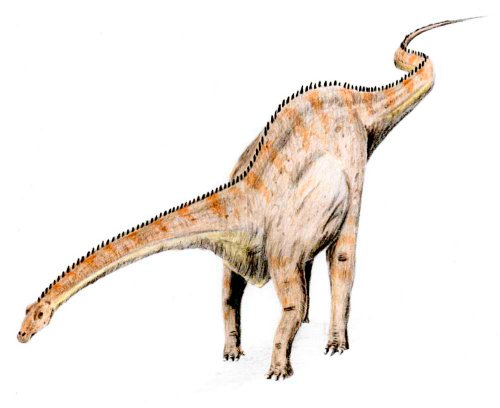 |
| Diplodocus is one of the longest sauropods, stretching 112 feet in length! |
Sauropods came in all shapes and sizes. Here is a short list of several species:
Apatosaurus
 |
| Apatosaurus primarily fed upon low-growing ferns and cycads. |
Apatosaurus is one of the most well-known of sauropods. It lived in western Pre-Flood North America and its fossils have been discovered in the Morrison Formation. On average, these dinosaurs grew 75 feet long or so and weighed around 18 tons (but recent discoveries have revealed
Apatosaurus might have grown up to 90 feet long and weighed anywhere between 30-80 tons!). It is a member of the diplodocid family and a close relative of
Diplodocus. This dinosaur was once known as the ever-popular Brontosaurus. Unfortunately for fans of Brontosaurus, it never existed, as its fossil remains were actually comprised of both
Apatosaurus and
Camarasaurus.
Camarasaurus
 |
| Camarasaurus was the most common species of sauropod found in the Morrison Formation. |
Camarasaurus is the most common sauropod species in the Morrison Formation (
Apatosaurus being the second) and lived alongside giants such as
Apatosaurus,
Diplodocus and
Brachiosaurus. It was a relative of
Brachiosaurus, but at 75 feet long and 51 tons, it was slightly smaller. Its head was much more boxy than that of diplodocids.
Brachiosaurus
 |
| Brachiosaurus was one of the largest dinosaurs, weighing up to 62 tons! It could browse upon tree-leaves few others could reach. |
Famous for its appearance in Jurassic Park and Jurassic Park III,
Brachiosaurus is one of the largest dinosaurs in North America. Its fossils have been discovered in the Morrison Formation. A full-grown
Brachiosaurus weighed 62 tons, was about 85 feet long and stood 40-50 feet tall! Its immense height enabled it to eat from trees no other animals in its ecosystem could reach. Unusual for sauropods,
Brachiosaurus and its relatives have longer front legs than back legs – this is obviously a feature that better enables them to reach their long 20+-foot necks into the tree tops.
Saltasaurus
 |
| Saltasaurus was covered in bony armor to protect itself from predators. |
At 39 feet long and eight tons,
Saltasaurus was far from being the largest member of the sauropod group. It is likely that you noticed
Saltasaurus' several rows of bony scutes on its back. These were to help protect the animal if it were ever attacked by predators, like the ferocious
Carnotaurus.
Saltasaurus is native to pre-Flood Cretaceous South America.
Mamenchisaurus
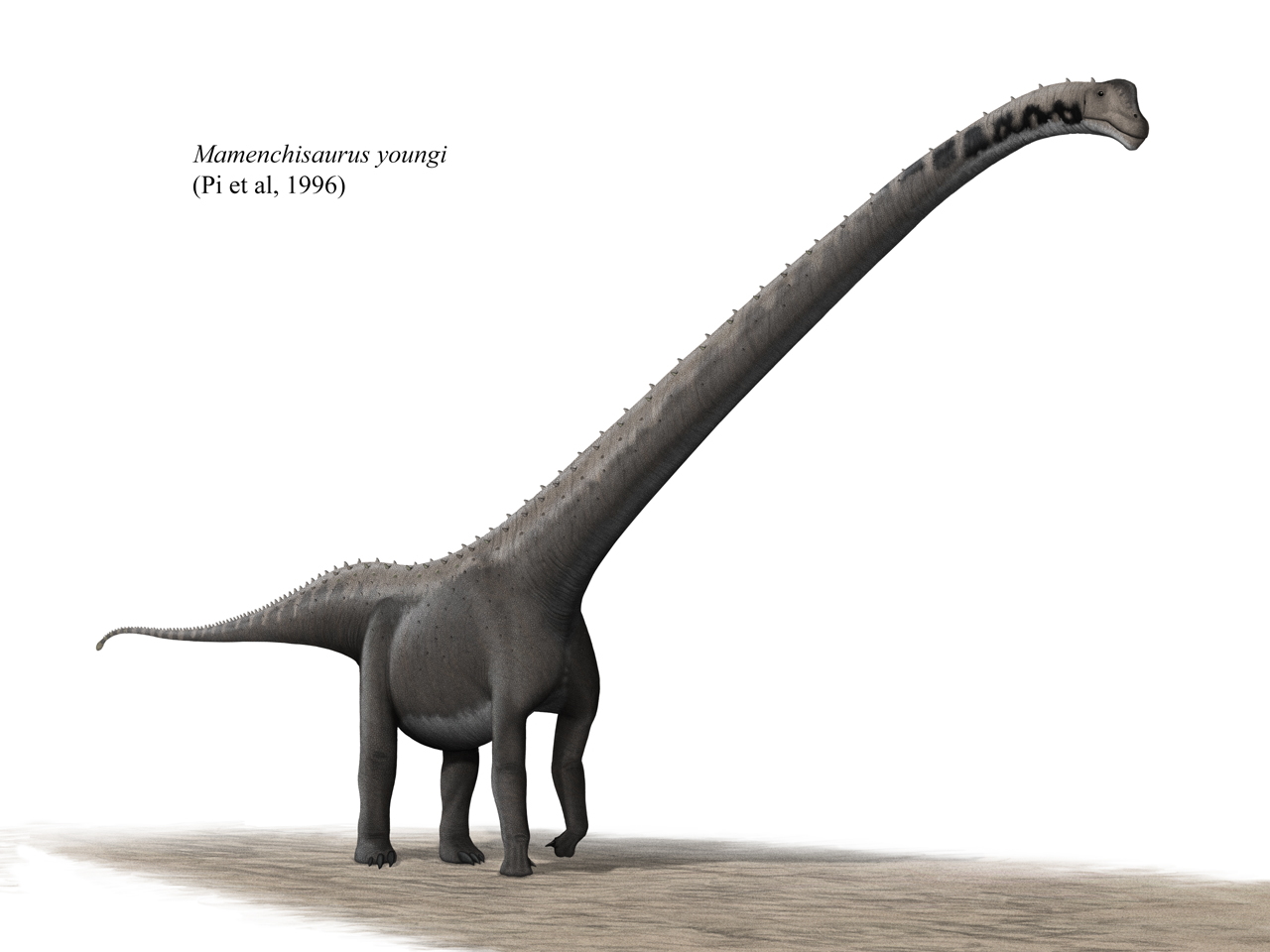 |
| Mamenchisaurus' neck was over 30 feet long! |
Sauropods are famous for having long necks, but the Chinese
Mamenchisaurus had an extremely lengthy neck in proportion to the rest of its body, even by sauropod standards! Out of its 60-foot length, half of that was in fact its neck! This dinosaur lived in a Jurassic pre-Flood habitat.
Dreadnoughtus
 |
| Dreadnoughtus is the largest dinosaur that we have a relatively complete skeleton of. IMAGE CREDITS |
Dreadnoughtus is the most recently discovered sauropod in this list, as it was only scientifically described last year! Upon its discovery, it was announced as the largest dinosaur ever found from a relatively complete skeleton. It was 85 feet long and weighed up to 65 tons! Straight from South America, this dinosaur's name means “fearing nothing”; a perfect name for an animal that, as a healthy adult, had no natural predators.
Argentinosaurus
 |
| Argentinosaurus is the largest dinosaurs we know of. It weighed almost 100 tons! |
Argentinosaurus is estimated to be far larger than
Dreadnoughtus, but the fossil remains of this dinosaur discovered so far are not nearly as complete. It and
Dreadnoughtus were relations to
Saltasaurus, and all three species made their home in pre-Flood South America.
Argentinosaurus stretched 75-115 feet from nose to tail and it weighed up to 100 tons or so.
Magyrasaurus
 |
| Magyrasaurus was one of the smallest sauropods, only the size of a pony. |
Even though this sauropod was a close relative to Argentinosaurus, Dreadnoughtus and Saltasaurus, it was far smaller. In fact, Magyrasaurus was only 20 feet long from nose to tail and 1 ton in weight – the size of a pony! This means it was at least 75 times smaller than Argentinosaurus. This sauropod was discovered in Romania, in Europe and was dug up from Cretaceous sediments. Several other species of dinosaurs from this region had smaller size than their close relatives, including Rhabdodon (an ornithopod) and Struthiosaurus (a nodosaur). Preying upon these creatures included predators such as Tarascasaurus (an abeliasaur), Balaur (a double-sickle-clawed relation to Velociraptor) and the gigantic pterosaur (flying reptile) Hatzegopteryx.
 |
| Magyrasaurus lived in a world of dwarfs. |
Fossils of sauropods have been discovered on every continent (including Antarctica) and are found throughout Jurassic and, to a lesser extent, Cretaceous rock layers that were deposited in the Genesis Flood. When the first sauropod fossils were discovered, scientists believed they were too large to support themselves on land. Therefore, they must have lived in aquatic habitats, like the hippopotamus. In the 19th and early 20th century, sauropods were portrayed as sluggish, lazy beasts that slugged through mucky swamps. This idea was also supported by the belief that sauropods like
Brachiosaurus had nostrils on the tops of their heads so they could remain completely submerged, save the tops of their skulls, just like many largely aquatic animals today (like crocodiles and hippos). But this all changed in the 1950's when paleontologists discovered that if
Brachiosaurus (which could grow 40-50 feet tall) and other sauropods submerged themselves in water that deep, their lungs and airway would have collapsed under the immense pressure. In addition to this, scientists have also found that most of the bones in a sauropods body were hollow, meaning they would have been too buoyant to submerge themselves in the water. Also, scientists have realized that sauropods likely did not have nostril openings high on the skull, but rather they were more toward the end of the snout.
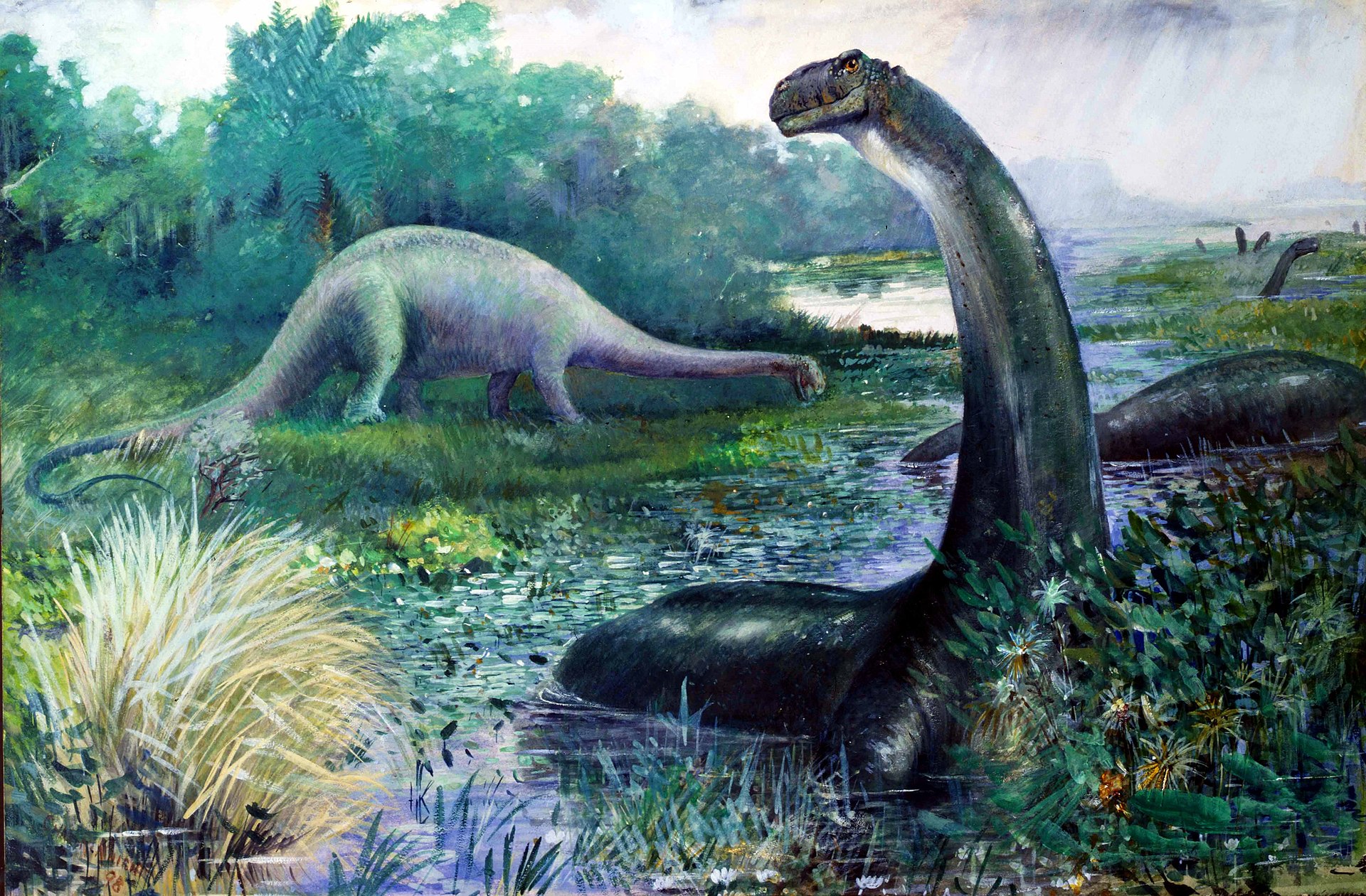 |
| It was once thought that sauropods had to wallow in swamps because they couldn't support themselves on land. This has been disproven. |
During the Dinosaur Renaissance scientists further studied the fossils of sauropods and found out that they were very incapable of an aquatic lifestyle. Even their very legs were designed to support their girth on land. However, sauropods were still able to swim. We know this because some fossil footprints have been discovered to preserve only the forefoot impressions.
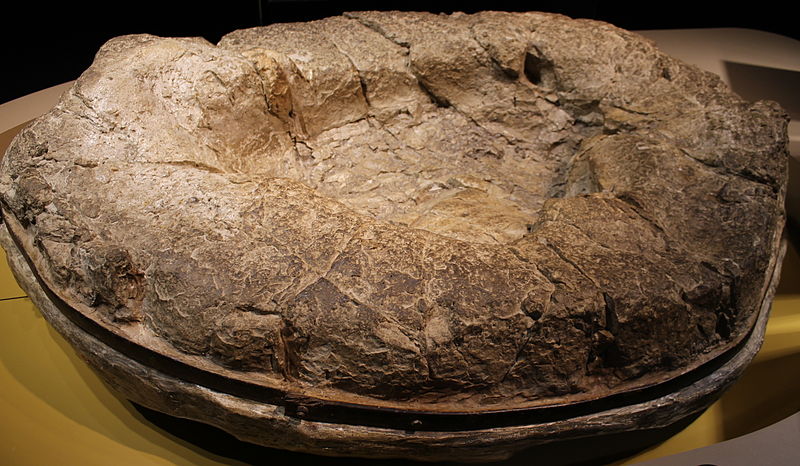 |
| Sauropod footprints were large, some being the size of truck tires! |
One problem posed by the sauropods' great size was finding enough food to eat with their diminutive-sized head. How did they eat enough to sustain themselves with a head so small? Well, first we have to know how much sauropods would have needed to eat (the exact amount would have varied between species and individuals of different sizes). Scientists calculations suggest that a 77-ton
Brachiosaurus would have needed to consume 260 lbs of plant matter a day. Behemoths such as
Argentinosaurus were even larger and probably needed more food! Of course, long before paleontologists came around, God already had the the solution: eliminate the need to chew. These dinosaurs, as I mentioned before, lacked chewing teeth and only possessed peg-like teeth at the front of the jaws. The shape and wear on the teeth indicate that sauropods stripped vegetation off of plants and swallowed. Stones, called gastroliths, were swallowed by the sauropods that ground up the food in their gut.
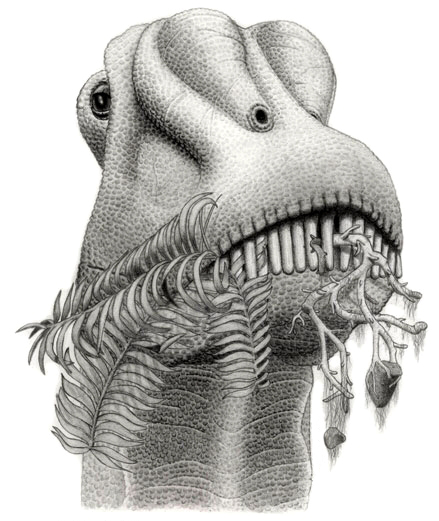 |
| Sauropods stripped vegetation with their peg-like teeth. The plant matter was then ground up in their gut by gastroliths they had swallowed earlier. |
Specifically what did sauropods eat anyway? There is no one answer to this question, because different species of sauropods dined on different types of plants. Some, like Brachiosaurus probably ate from the tallest of trees using their upward-angled necks. Diplodocids such as Apatosaurus and Diplodocus itself seemed to have been incapable of reaching high into tall trees and likely stuck to dining on low-growing ferns and cycads. Relatively recently, fossilized sauropod dung was discovered containing grass. None of these foods were particularly nutritious, which was why sauropods probably spent most of their lives eating.
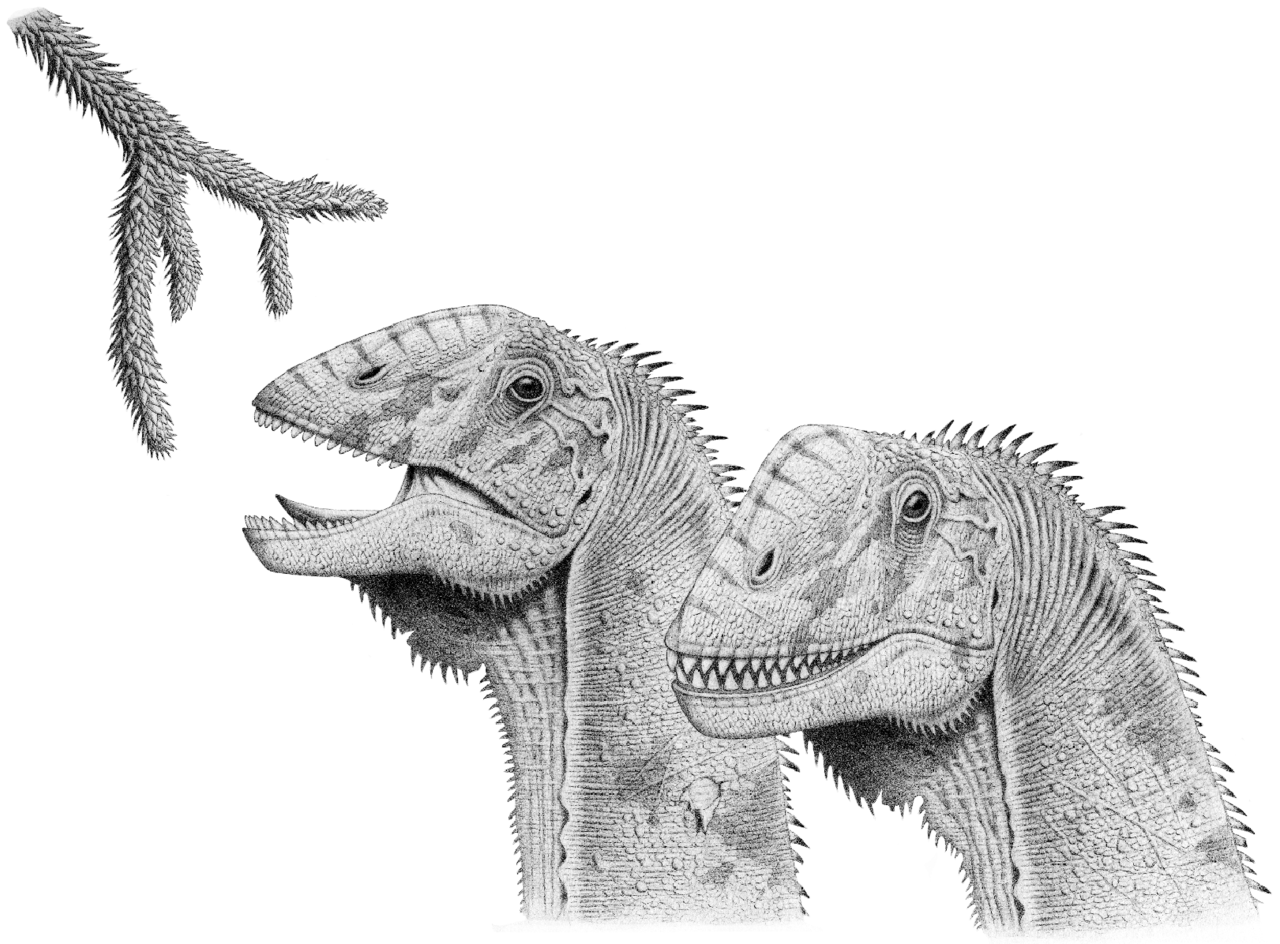 |
| Some macronarian sauropods, such as Brachiosaurus and the pair of Euhelopus portrayed above, were browsers, eating vegetation from tall trees. |
Scientists are unsure why the sauropods grew so large. Some believe that it was so their size alone could fend off nasty predatory dinosaurs. While it was true that their size did keep them safe from most carnivores, several were probably more than happy to try to attack one of these awesome giants. One such predator that we know at least fed on sauropods is the
Allosaurus (fossil bite marks of
Allosaurus have been discovered embracing
Apatosaurus bones). It's likely that even the largest of sauropods, like
Argentinosaurus would have been in danger of predators like
Giganotosaurus and
Mapusaurus when young, injured or old. How did sauropods defend themselves from such attackers? Well, they could certainly squash a predator underneath their huge feet. They also had long tails. Scientists looked at the tails of diplodocids like
Apatosaurus have noticed they are incredibly whip-like. While not likely often used to physically harm an attacker, paleontologists believe that a diplodocid could swish its tail through the air to create a whip-like cracking sound. The sound is believed to have been as loud as 200 decibels – that's about the same produced by a firing cannon! A noise like this would definitely have scared many carnivores away.
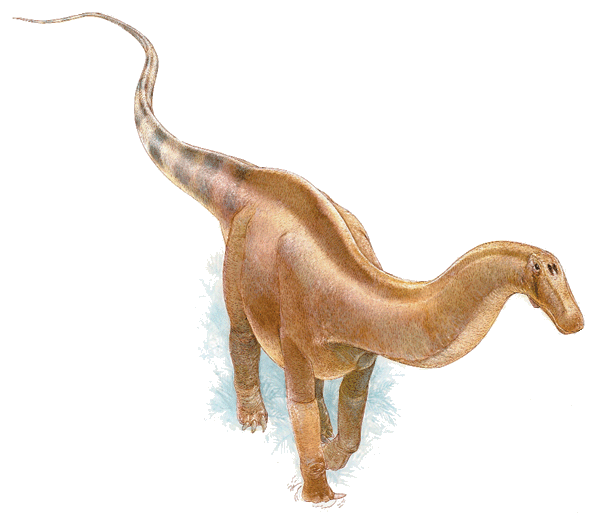 |
| Apatosaurus could likely create a whip-lashing noise to scare off predators. |
For a long time, the reproductive habits of sauropods were virtually unknown. This all changed in the late 1990's when paleontologists in Argentina discovered a vast nesting ground filled with the fossilized nests, eggs and even embryos. The embryos were still encased in their tough egg shells and even possessed fossilized skin. These nests were probably made sometime during the Genesis Flood and were eventually covered in sediment before the babies hatched and later fossilized. Other fossil egg clutches that have been found don't seem to have been laid in a nest. In fact, it seems as if the eggs were laid as the mother sauropod was walking! It is likely that the mother was desperately trying to escape the rising Flood waters, but was unable to hold her eggs within her body any longer. She quickly laid them and they were covered with water and sediment.
 |
| Here, you can see the fossils of a baby titanosaur sauropod still inside of its egg. |
Despite their size as adults, sauropods hatched from rather small eggs – only a bit larger than a football. After hatching, microscopic studies of the bones of these animals indicates they were fast growers!
Apatosaurus are believed to reach a near-adult size of 18-30 tons in only about 10 years! And from a measly 11 pounds, baby
Argentinosaurus put on 75 tons in weight by the time they reached the age of 40. This massive influx of growth is similar to a teenage growth spurt in humans. At the peak of their growth,
Argentinosaurus put on 88 pounds every day! In order to fuel this growth, the sauropods needed to feed. Fossils reveal sauropods are born complete with a set of teeth so that upon hatching, they could start their lifetime of eating.
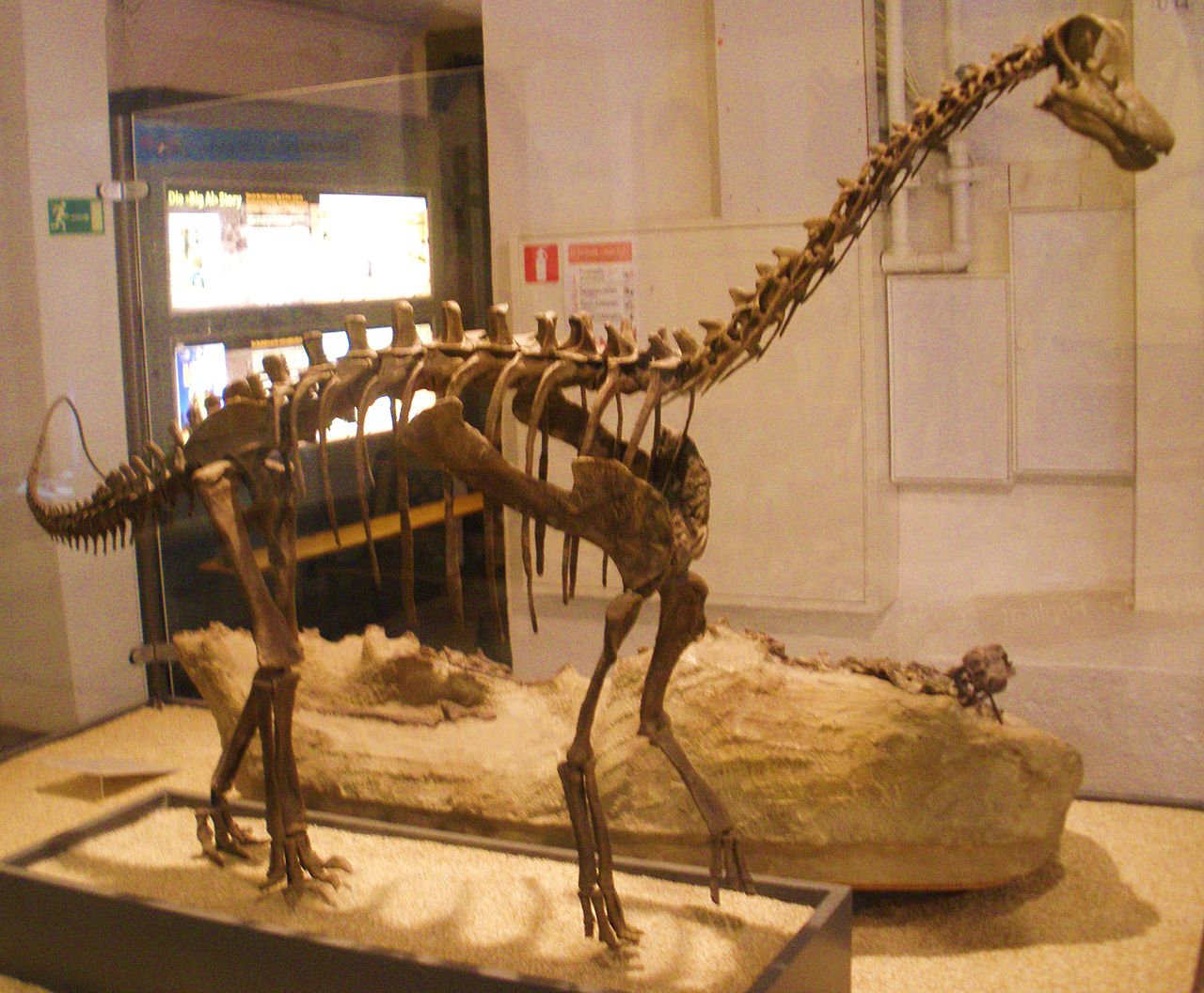 |
| Baby Apatosaurus reached an adult size of 18-30 tons in only about 10 years! |
Several fossil trackways suggest that sauropods lived in herds consisting of both adults and their young (usually juveniles one-third of the adult size). Living in herds would have helped keep these animals safe from predators.
Sauropods were some of the largest and most beautiful creatures in God's creation. They are unique in their design. What else could we expect to see in creatures created by our amazing, unique Jehovah God?
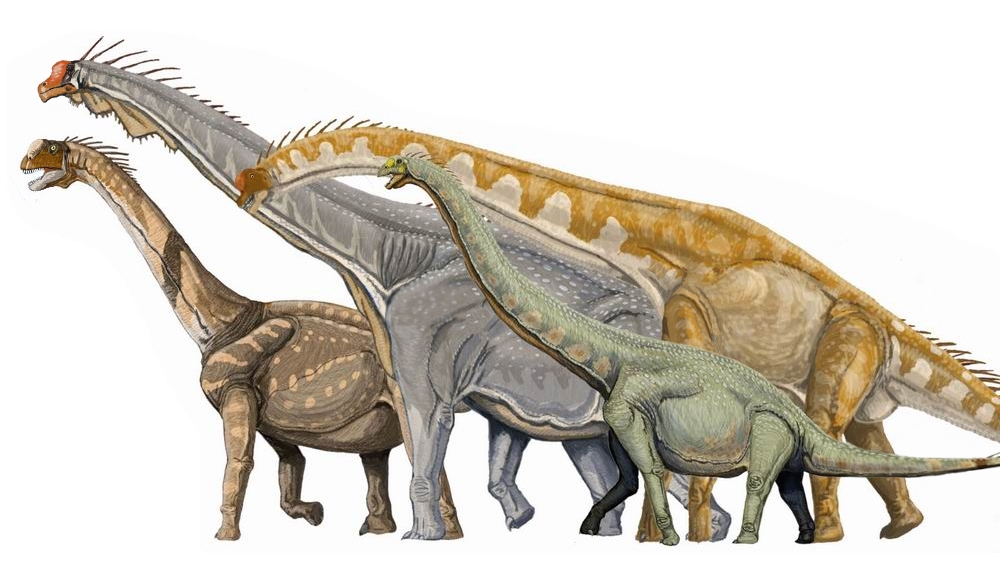 |
| Sauropods are one of God's grandest achievements! |
References:
www.enchantedlearning.com/subjects/dinosaurs/glossary/Sauropod
www.answersingenesis.org/dinosaurs/types/sauropods-living-large
www.wikipedia.org/wiki/sauropoda
www.wikipedia.org/wiki/brachiosaurus
www.wikipedia.org/wiki/apatosaurus
www.wikipedia.org/wiki/camarasaurus
www.wikipedia.org/wiki/saltasaurus
www.wikipedia.org/wiki/dreadnoughtus
www.wikipedia.org/wiki/magyrasaurus
www.wikipedia.org/wiki/argentinosaurus
www.ucmp.berkeley.edu/diapsids/saurischia/sauropoda
Disclaimer: Many (or in some cases all) of the photographs and images above are not mine. If you own one or more of them and would like them to be removed, politely let me know via my email address.





















No comments:
Post a Comment